Make no mistake, we’re living in the gold rush period of podcasting.
The media landscape seems to be changing every second. Just as everyone seems to get a grip on one form of media, it’s suddenly overtaken and phased out by something better.
90s babies might distinctly remember religiously planning their TV viewing schedule for the week using the free-tv guide that came in newspapers and the mail. Going to video rental stores like Blockbuster was the highlight of the weekend, and your VCR “chewing” up a videotape was enough to spoil an evening.
Then DVDs came onto the scene, followed by Blu-ray, cable-TV, the rise of digital streaming, and now we barely turn our heads to notice the tremendous number of streaming services at our fingertips.
Editor’s note: This article was originally written by Jonathan Chan but has since been fact-checked and updated by Nathan Chan, an expert in podcasting, having recorded the Foundr podcast since 2014.
Safe to say, we are experiencing a new media revolution every decade or so, and it’s difficult to stay ahead of it all.
We’re no longer subject to the whims of scheduled programming and major media networks. Technology has allowed ordinary people to create and produce their own content without needing permission, and at the forefront of it all is the mighty podcast.
According to a study conducted in 2017, 50% of all US homes are podcast fans, with an estimated 16 million people describing themselves as “avid podcast fans”. In 2020, an estimated 68 million US citizens listened to podcasts weekly, and 40% reported listening to three or more different podcasts.
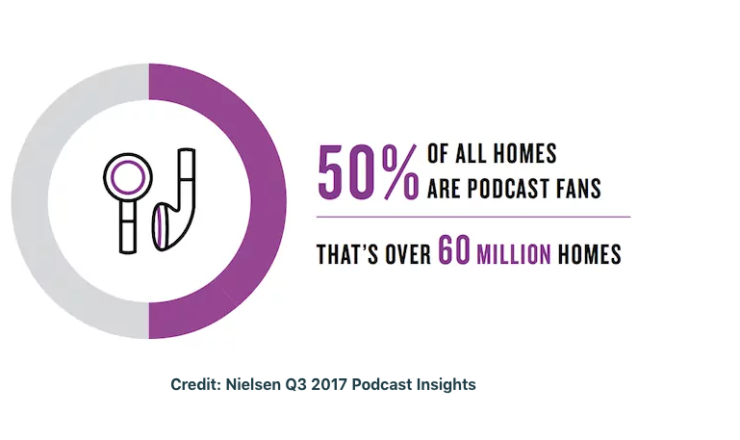
For Foundr, our own podcast has been a game-changer for the business and the brand, and we wouldn’t be the same without it. Some of you reading this may have actually first heard about us through our podcast.
If you want to get in the podcast game, and we highly recommend you do, we are here to provide you with the ultimate checklist to create a high-quality podcast.
Understand Your Motivation for Beginning a Podcast
First all of all, let’s figure out what it is you want to get out of podcasting. It’s important that you clearly understand what your goal is because podcasting is super fun but it can be an uphill battle sometimes.
You may hit a wall or you may run out of motivation, and the only way to get your podcast on the right track is dedication and consistency.
Unless you’re willing to stick to a schedule and routinely push out high-quality content, you’re not going to get very far. So when you hit that point when you find yourself internally groaning at the thought of recording another episode, it’s important to reflect back on why you started.
Start your podcast checklist by noting your ultimate goal. It’s important to only have one singular goal in place as it helps you to focus on without compromising. Trust us when we say that acing that one goal will allow everything else to fall into place.
Expand Your Brand’s Influence
This is the number one reason most people want to start a podcast. Whether it’s building a deeper connection with your existing audience or exposing your brand to an entirely new audience, expanding your brand through a podcast makes good business sense.
The main reason is simply a matter of convenience. Reading an article requires your audience to sit down and give it your full attention, whereas a podcast can be listened to anywhere at any time. Podcasts can be listened to when exercising, driving, cleaning, or even in the shower; can’t do any of that with a book.
The second reason is simply a matter of numbers. According to Forbes Magazine, there are now over 850,000 active podcasts with over 54 million podcast episodes currently available worldwide. Meanwhile, there are an estimated 600 million blogs worldwide.
Simply put, it’s much easier to stand out in the crowd in the podcasting world than it is with blogging, especially if you’re consistently releasing high-quality content.

Build Authority
An interesting quirk of human psychology is the fact that we’re far more likely to retain information if it comes from someone we feel that we have a personal connection with.
A major challenge with blogging is that it’s tricky to establish a clear voice or personality that your audience responds to. The trouble with text is that so much can get lost in translation.
With podcasting, the subtle nuances in tone, emotion, and meaning are far less likely to get misinterpreted or go unnoticed entirely. That means not only are listeners more likely to retain the information you’re saying, but they’re also more prone to develop a personal connection with you.
One of the reasons podcasting is so popular is because it feels so intimate. With podcasting, you leverage that feeling of intimacy to build your personal authority as a thought leader or an influencer.
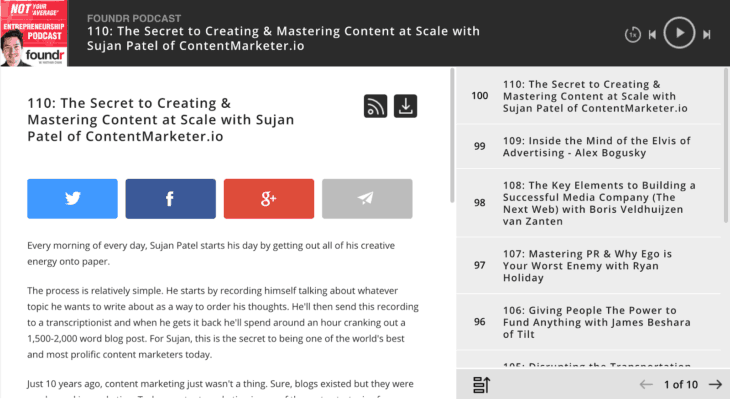
READ MORE: 3 Ways to Create a Facebook Sales Funnel That Will Convert Customers on Autopilot
Networking
How many of you would love to talk to someone like Tim Ferriss, Seth Godin, or Richard Branson one-on-one for 30 minutes? But outside of outright paying them for their time, how else can you get your foot in the door?
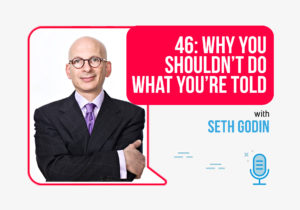
A great leveraging point that comes with high-quality podcasting is that you are given a reason to network with high-profile influencers.
After all, no one is just going to give you their time for free unless there’s something in it for them. Being the host of a podcast means that you naturally have a point of leverage that you can use.
What you’re offering is free exposure and publicity and all they need to do is find 30 minutes out of their day to have a conversation with you. That’s a deal that most people would be more than happy to make.
That’s not to mention that the podcasting community, while small, is incredibly vibrant. The majority of podcasters are self-starters who are incredibly passionate about their topics. You’ll naturally find yourself being able to tap into that community, and who knows, maybe your podcasting-buddy interviewed Seth Godin before and would be happy to introduce the two of you.
A New Source of Revenue
Did you know that you can make money with podcasts?
There’s a variety of ways to make money off podcasting, but the most direct way would have to be through advertising and sponsorships. Business Insider forecasts that by 2021, ad spending on podcasts will reach $1.13 billion. That’s a lot of advertising budget to tap in to.
That’s all due to the fact that nearly two-thirds of podcast listeners show an intent to purchase after hearing an ad from their favorite podcaster.
While podcasting works best as a branding tool, it can also be a fantastic source of revenue for you if you build it up correctly.
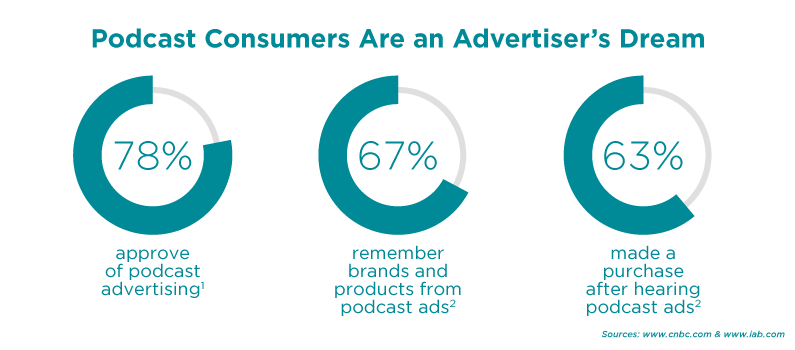
Tools to Start a Podcast
Next up on the podcast checklist is figuring out what your podcasting setup is going to look like. After all, a workman is only a good as his tool.
Here’s the cool thing about podcasting, pretty much anyone can do it. Sure you could get spend thousands of dollars hiring out a professional-grade recording studio with all the bells and whistles. But you can just as easily create an award-winning podcast with nothing but your standard iPhone earbuds and mic.
Thankfully though you don’t have to live between these two extremes. Here are some inexpensive, and not so inexpensive, options for anyone looking at starting a podcast.
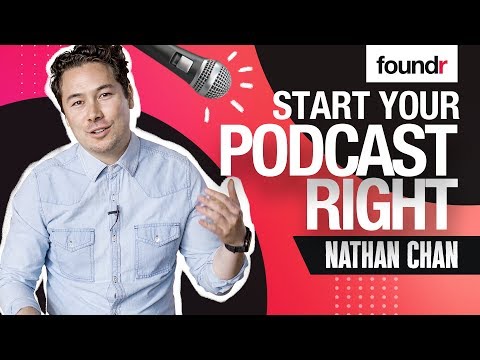
Microphone
The most important thing in your podcast arsenal is your microphone. It should go without saying that if you don’t good quality audio for your podcast then you don’t have a very good podcast. The great thing is that you don’t need to break the bank in order to get a great microphone that produces a clear, crisp sound.
All the microphones that we listed here are USB mics, meaning that all you need to do is plug it into your computer and you can immediately start recording. For most podcasters, this is a much cheaper option and would be more than enough for their needs.
However, if you’re very pedantic about getting super high-quality sound, or doing live shows, then you might want to invest into an analog microphone with an XLR connection. Although they are usually on the pricier side of things.
- Samson Go Mic ($40) A Recommended by the host of the Suitcase Entrepreneur Natalie Sisson, this is a handy little travel mic that is compact, can clip onto your laptop, and great for traveling. All the while delivering great sound quality.
- Audio Technica AT2020 ($80) A great middle-of-the-range USB mic where all you need to do is plug it into your computer and you and immediately start recording. If you need any more convincing, this is the same microphone that Chris Ducker of Youpreneur has been using for the past 5 years.
- Blue Yeti Mic ($129) Designed specifically for podcasting the Blue Yeti mic is the go-to microphone for anyone starting out in the podcast industry. While a bit higher-priced, it’s well worth the investment if you’re planning on doing podcasting full-time.
- Rode Podcaster Mic ($230) As you get more experienced with podcasting you might want to start investing in mics that are specifically designed for podcasting. As a directional mic, it means you won’t have much of an issue with environmental noise as long as it’s not directly in front of you. This is still the official mic of the Foundr podcast!
- Heil PR-40 Mic ($327) A favorite of John Lee Dumas of Entrepreneur on Fire and Jon Nastor of Hack the Entrepreneur, the Heil PR-40 microphone is a fantastic microphone with dynamic recording ability. Albeit this is more suited for experienced podcasters who already have an invested audience.
Headset
The one thing about podcasting is that you don’t necessarily need those big goofy headphones in order to do a quality podcast. The main reason you’d want to use headphones is that you want to prevent any reverb or feedback into the mic, although you may be surprised to know that most podcasters simply use the standard Apple earbuds for podcasting.
Although if you are very particular about your sounds here are some great headset and microphone combos you can use for your own podcast.
- Plantronics 655 Multimedia Headset ($30) This is the headset that Nathan uses for the Foundr Podcast. Comfy and complete with a noise-canceling microphone for clear sound, this is a great all-rounder for anyone starting a podcast.
- Sennheiser PC 7 USB Headset ($30) A relatively small unit with great recording capability, although you may not be a huge fan of the one-ear design.
- Jabra UC MS Voice 550 noise-canceling USB Duo Headset ($45) Originally developed for phone calls, this is a great headset with a noise-canceling microphone which is great if you find yourself in a less-than-ideal recording environment.
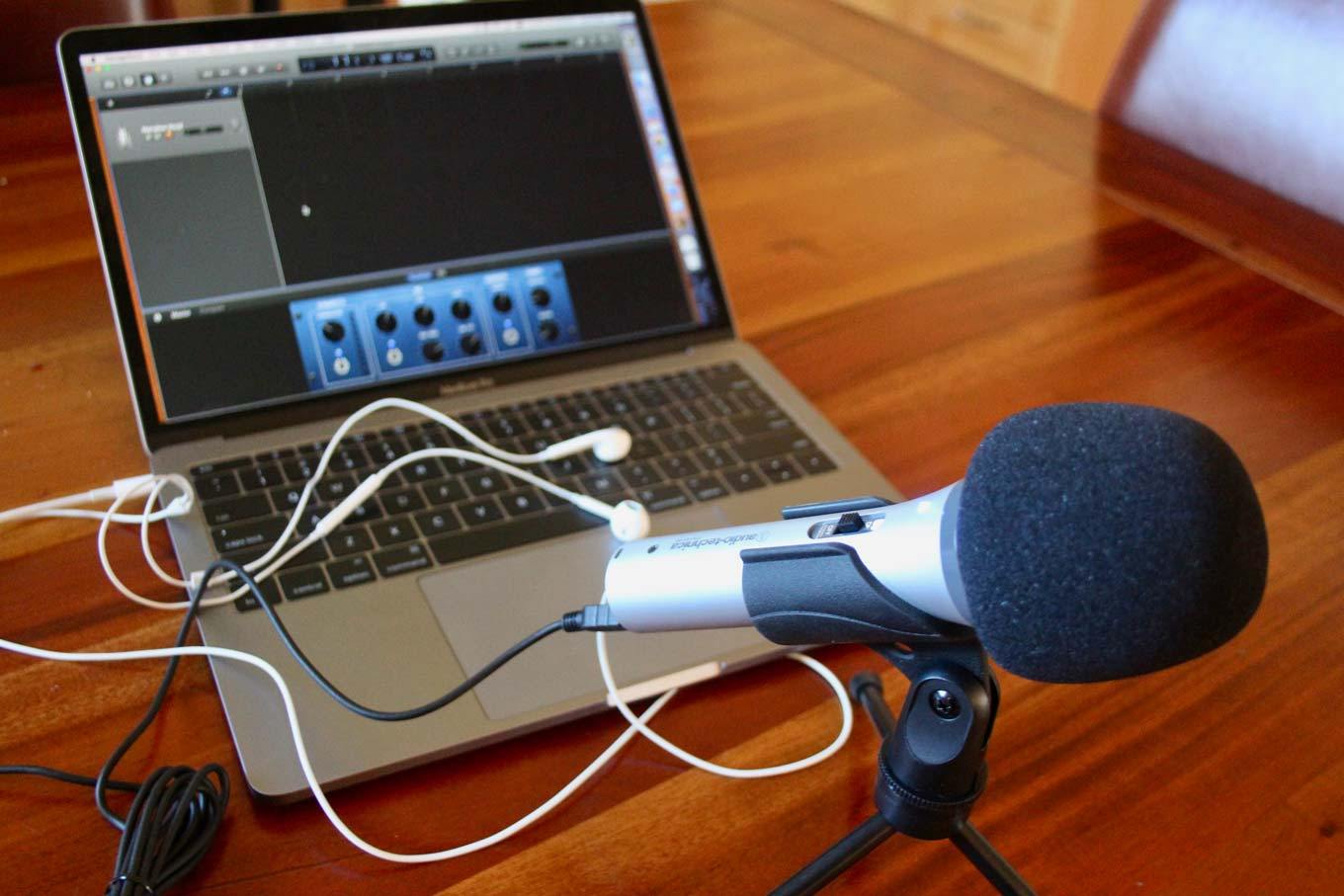
Recording
If you’re going to produce a podcast, you’re going to need some recording software. Thankfully, recording software is pretty cheap and easy to come by, so you won’t need to worry about digging deep into your pockets for this tool.
eCamm Skype Call Recorder ($29.95) Because we hold most of our podcast interviews on Skype this is our go-to audio recorder for the Foundr podcast. Unfortunately, it’s for Mac only.
Pamela($27.82) Pretty much the exact same as eCamm Skype Recorder but for Windows instead.
Camtasia ($299) Camtasia is actually a screen recorder, but you can use it as a backup recorder. It’s also great if you’re intending on recording the video from your interview and looking to upload it onto YouTube later.
READ MORE: 10 Instagram Growth Hacks For More Engaged Followers (Without Running Ads)
Bonus: Tips for Recording
Record on two programs at the same time. It’s always a good idea to record on two different platforms at the same time if possible, just in case something goes wrong with your primary recording. It’s best to have your secondary recording be on an external device in case your computer crashes mid-way. Recording onto your phone can easily do the trick.
Have your guest record their side as well. If it’s impossible for you and your guest to be in the same room for a recording then you should ask your guest to record their side of conversation if possible.
It greatly helps with the editing process if you can edit two different tracks instead of just one.
Have an echo-free room. While you don’t need a professional-grade recording studio you should at least be recording in a quiet room where you can be heard clearly. No one likes to listen to a podcast with a bunch of noise in the background. Just putting a carpet in the room might be all you need in order to echo-proof your room, but here are some extra tips in case you’re still having problems with your acoustics.
Editing
With the Foundr podcast, we actually don’t do our own editing. To save time, we outsource this task to our awesome editor in Hungary, Balazs. If you can afford to hire your own dedicated editor, I would highly recommend it. There are plenty of tools available for you to do it yourself, however.
Audacity (Free) Available for both Mac and Window computers, Audacity is a great free alternative to any of the paid or premium audio editing software. It’s a great freeware tool with tons of tutorials out there for you to reference. It also allows you to record directly from a microphone and into Audacity.
Garageband (Free) Packaged with all MacBooks, Garageband is a decent audio editing platform that allows you to do the most of what you’re looking for when editing a podcast. Just like Audacity, Garageband also allows you to record directly onto it and save as an MP3 later.
Adobe Audition ($19.99 p/m) If you want to get really technical then you should go with Adobe Audition. It’s got tons of bells and whistles, but if you’re just starting out with a podcast then it might be more than what you need.
Auphonic (Varied Pricing) If you’re not keen on editing your audio levels yourself then you can use a post-production service like Auphonic, which will take care of the leveling, volume normalization, and other details for you.
Upwork (Varied Pricing) If you decide to outsource your editing, you can easily find a good editor over at places like Upwork.
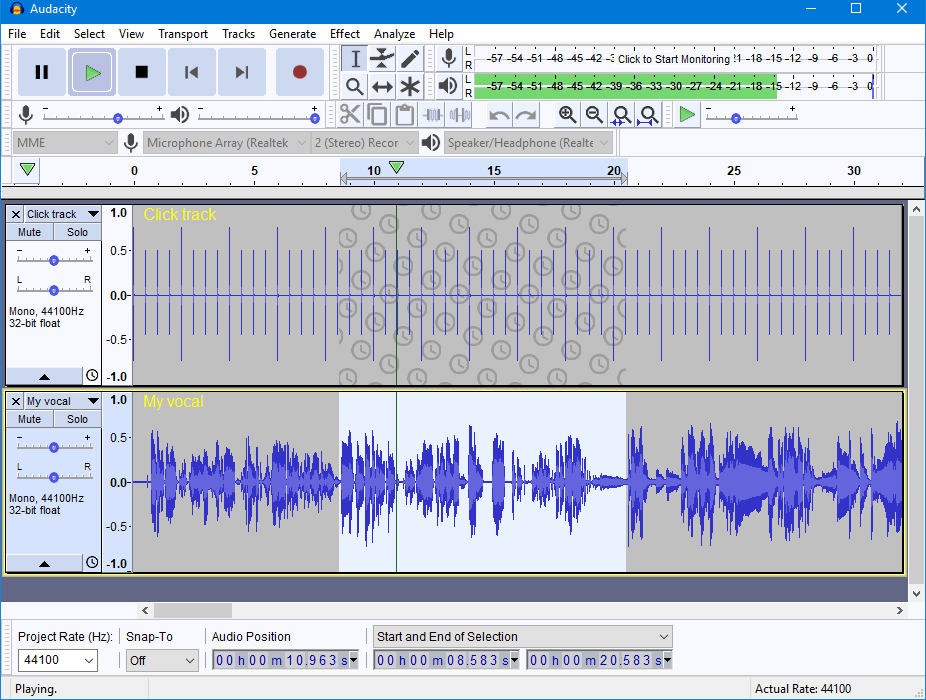
Bonus: Tips for Editing
Pay attention to pacing. The most important thing to pay attention to when editing your podcast is pacing. Basically you want to make sure that your podcast flows as naturally as possible. When it comes to editing you want to be as ruthless as possible. It doesn’t matter how much you enjoyed that tangent where you spent three minutes talking about the nature of the aubergine. If you feel like your ideal listener wouldn’t like it, then cut it out.
Check over your audio levels.
There’s nothing more frustrating for a podcast listener than always having to change their volume because the levels are always changing. Don’t make that mistake and make sure your audio doesn’t swing wildly from a soft whisper to loud screaming.
Make sure your tags are in order. Before you publish your podcast episode, make sure you go back and quickly edit your ID3 tags. These tags are how MP3 players and devices get their information about any audio file. It might sound like a finicky step, but it definitely beats having your podcast rustling around in the “Artist – Unknown” playlist.
Make sure your file is the right format. Make sure that you export your audio as an MP3 with a fixed bitrate as this is the best format for your audio. 128kbps is a good bitrate to use as it keeps the file size low while maintaining good audio quality. Most editing software will allow you to select these features when you export your file.
Hosting
While it is entirely possible to set up your podcast on your own site with a simple plugin, I would recommend against it. If you plan on really growing your podcast then it would be in your favor to invest in a podcasting hosting service.
The main reason is that most websites hosts don’t have the bandwidth or speed to handle the downloading and streaming that MP3s create. Also, it’s never a good idea to host all your files on the one server in case something goes wrong. By using a podcasting host you don’t have to worry about things like that and fortunately, most of them are very affordable and quite cheap.
SoundCloud (Free or $16 p/m for Pro) For those just starting a podcast, SoundCloud might be the best option for you. It allows free podcast hosting and allows you to distribute your podcast via RSS. Unfortunately, though, you won’t be able to access any of their analytics without paying for their pro package, so you definitely want to take into account how that’ll affect you in the long term.
Libsyn ($15 p/m) Often considered to be one of, if not the, best podcast hosting service around, Libsyn is one of the oldest dedicated podcast hosting sites and the go-to choice for many podcasters, including us. With Libsyn, we’re able to take advantage of their analytics feature and track everything from the number of downloads per episode to the geography of our listeners.
Podbean ($9 p/m) Podbean offers a free option for podcast hosting, but you’ll have to pay in order to access any of their better features like analytics. They also offer a service where they can connect your podcast with advertisers if you’re looking to monetize your podcast at a later date.
There are many more podcast hosting options available, and you should check a few more to make sure your podcast performs as it should.
READ MORE: 30 Expert Tips on How to Get 10k More Followers on Instagram
Awesome-to-have
While you don’t necessarily need any of the following items on this list, they are definitely nice to have.
Pop Filter Pop filters help keep out those clicking noises your mouth makes when speaking close to the microphone. They’re usually pretty cheap and well worth the investment.
Cable Arm Having a cable arm means that you can keep your microphone directly in front of your face without having to use your hands. While not necessary to have, you’ll be surprised at how much you need to use your hands while recording.
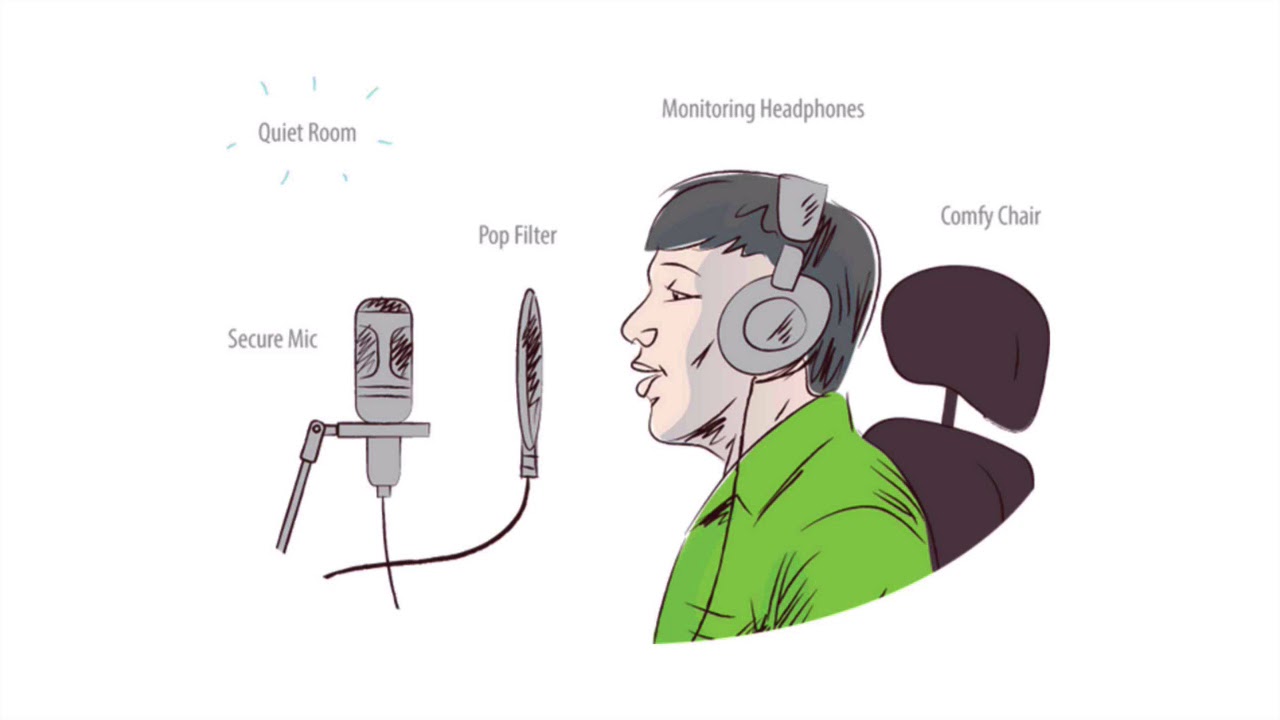
Zoom H1 Handy Digital Recorder ($100) If you’re running a podcast that requires you to be out in the field and outside of your own recording studio then you’ll definitely need a high-quality recorder that you can take around with you. Nice and compact, this recorder can definitely get the job done while canceling out any environmental noise that might be going on around you. It also serves as a great backup recorder in case your main recording fails for whatever reason.
Presonus Mixer ($1799) Let’s be clear here, you absolutely do not need a mixer in order to do an amazing podcast. Although if you really want to get that extra bit of polish on your audio, along with more control over your recording then you might want to look into getting a mixer.
Finding your Podcast Niche
Before you begin recording on all your fancy new equipment, you’re going to need to figure out what niche it is you want to target. This might sound easy since you probably already have a handful of episodes planned in your head already. But you have to consider whether your theme or topic is sustainable.
Is it a topic that can go beyond 10 episodes, or will you find yourself struggling to come up with new episode ideas? Are you sure you even have an audience interested in what you have to say in the first place?
Here’s a very simple exercise that you can do in 15 minutes to help you figure out what your podcast is going to be all about. Ask yourself the following questions:
What are you Interested in?
The first step is to create a list of all the things that interest you. Remember, it’s impossible to talk about something that doesn’t personally interest you. If you’re not engaged, then your audience won’t be either.
Make it easy on yourself and set a time limit of five minutes to write down anything and everything that you’re even a little curious about.
What Does Your Audience Want?
Next up, write about your perfect listener. Just like creating a customer avatar, you need to figure out what your ideal listener looks like and to get as granular as possible.
How old are they? What’s their gender? What type of schooling did they go through? How do they typically consume podcasts? Why do they listen to podcasts in the first place?
These are only some of the questions you need to be asking yourself when it comes to figuring out your perfect listener. You want to know them so well that it’s like you’re going to grab a drink with them this Friday night.
For the next five minutes, write 10 questions you need to know about your ideal listener and try to answer them all.
READ MORE: Psychographics 101: Everything You Need to Know; How It’s Used in Marketing
How do the two compare?
Great, now the hard part is done. All that’s left to do is take a look at your list of interests and see which topics you think your audience wants to know about too.
The first time to do is immediately cross out half of your list, no matter how much time you spent on it (sorry!).
After that, rank these topics in order of audience interest, with the topic you think your audience likes the most at the top and the least at the bottom.
And there you have it!
The first two or three topics should form the main focus of your podcast, with the rest being subjects that you can touch upon or get more in-depth with if you’re feeling that you’re in a bit of a creative slump.
Congratulations! You’ve now successfully come up with a podcast that’s practically guaranteed to get you results.
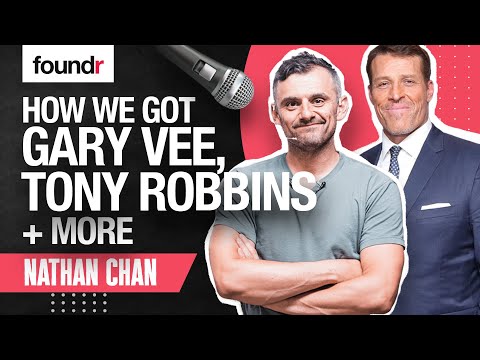
Bonus: Check out the Competition
If you’re still having trouble figuring out what topic your podcast should cover, a great way to get inspired is to take a look at all the other podcasts that already are out there.
There are a number categories in which your podcast can fall into on iTunes and Spotify.
See what other people are doing and get inspired, and see if any of their formats or styles appeal to you. Once you’ve got a clearer idea of what you want your podcast to achieve, do that simple exercise mentioned above and you’ll be well on your way to starting a podcast.
READ MORE: The 3 Best Low-Cost Businesses to Start with $1,000 or Less (Even $0!)
Types of Podcasts you can Start
The key to producing a great podcast, and to creating great content in general, is to always be providing your audience with valuable information. Now that you’ve got your podcast topic, it’s time to figure out how you’re going to deliver that value.
You have to ask yourself what type of value it is you’re providing. Is it entertainment? Is it educational? Is it inspirational?
Depending on your podcast topic and your intended audience, some podcast types will work better than others. Here’s a quick breakdown of the different types of podcasts you can do.
Also, we should point out that these podcast types aren’t set in stone. There will always be some sort of overlap between two or three, sometimes even four different types.
Mix-and-match and figure out what format best suits you and your audience.
News and Current Affairs
Podcasting owes much of its roots to news radio, as some of the earliest successful podcasts were just radio stations releasing their news coverage as MP3s for their listeners on the go.
This type of podcast is great because it offers a lot of flexibility in how you want to structure your show. It could involve interviews, reporting on the events of the day, or offering commentary on what’s been happening in your niche lately. By nature, news and current affairs podcasts are great at consistently providing value for your listeners.
The major downside to this type of podcast is that it can, more so than the others, require a lot of work to produce. It’s not uncommon for news podcasts to have whole teams of journalists and producers to stay on top of the news, conduct research, and compose into episodes.
Some popular podcasts of this type are:
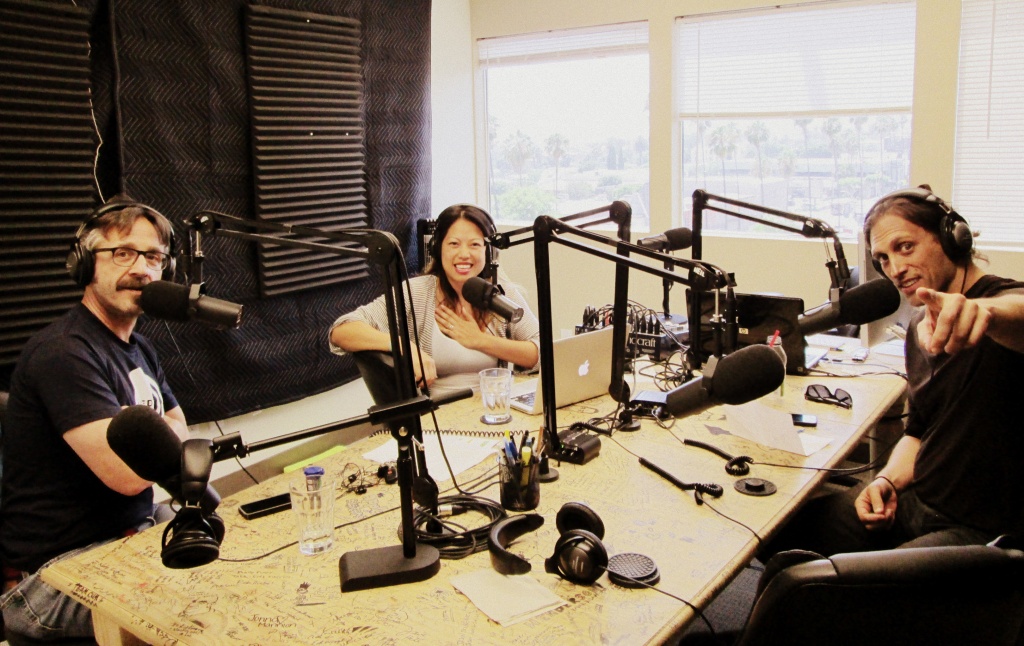
Interviews
It’s not uncommon for podcast interviews to be conducted with the host and guest in two separate locations. Our Foundr podcast interviews are often recorded remotely, especially during Covid social-distancing, and we found it to be a useful way to interview personalities across the globe.
For anyone just getting into the world of podcasting, the interview format is probably the easiest and most versatile.
No matter what niche you’re in, there is always going to be some kind of expert or influencer that you can get in touch with. If your goal is to use your podcast as a networking tool, this is definitely the type of podcast you want to do.
The great thing about an interview podcast is that it’s easily scalable and doesn’t require that much work from you—other than being a good host and interviewer, which takes time and practice, but no specialized or technical skillset. The value of this type of podcast mainly comes from the information shared by your guests, so there’s less pressure on you to be an expert or a seasoned entertainer.
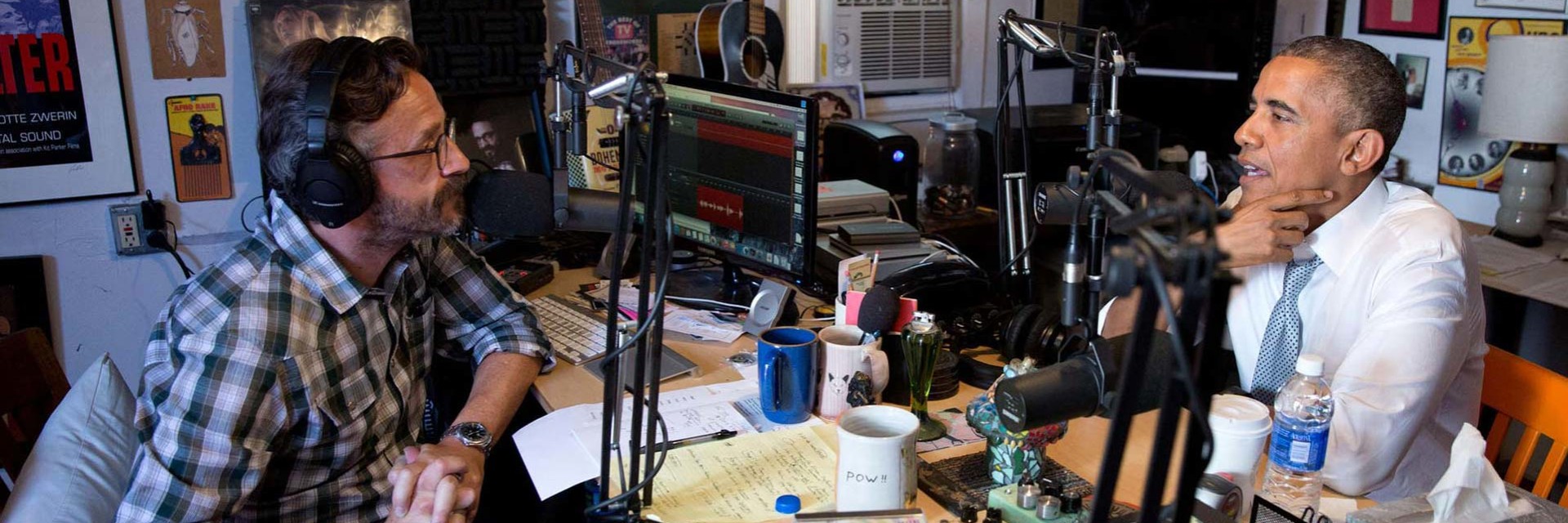
Discussion
When it comes to podcasting, it doesn’t get any better than listening to people just having a conversation and talking about stuff.
Discussion-type podcasts work best if you have a co-host that you have great chemistry with, but it isn’t always necessary. You can easily create a hybrid interview-discussion type of podcast where you can have a different guest every episode or rotating guests. Another great benefit is that this type of podcast can fit perfectly within any niche as long as you have someone willing to talk with you about it.
These podcasts are quite popular because they can feel quite intimate with the listener. Unlike interviews, discussion-type podcasts make the listener feel like they’re not just a fly-on-the-wall, but like they’re almost part of the conversation as well.
The main drawback of this type of podcast, though, is that it relies heavily on your chemistry with your co-host or guest. On the flip side, if you have too much chemistry, your episode can become very long-winded and actually leave your listener feeling exhausted by the end of it.
The hardest decision you’ll make when it comes to discussion-type podcasts is figuring out what to edit out in order to keep your episode under a manageable length.
Some popular podcasts of this type are:
Storytelling
Out of all the different types of podcasts out there, this is probably the easiest to produce initially, but can be difficult to sustain in the long term. Depending on your niche, the storytelling podcast can either be fiction or nonfiction.
Regardless of whether your podcast is about your own personal journey, a fictional tale you’ve created, or having guests share personal stories about themselves, the storytelling podcast is effective because the listener feels like they’re sharing the experience with the storyteller.
It naturally creates a connection, making it perfect for those looking to increase their personal branding.
As mentioned earlier, the trouble with producing a storytelling podcast is that it requires a lot of creative effort. It can be difficult trying to come up with or find an interesting story element that your audience responds well. You could end up burning out rather quickly.
Some popular podcasts of this type are:
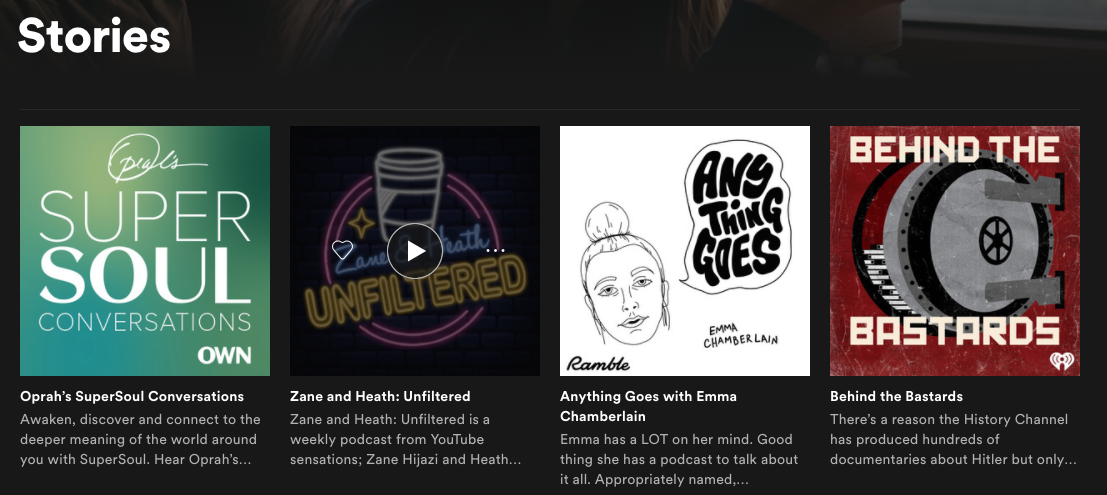
Educational
If your primary focus is educating your audience, whether it’s with actionable information or trivia, then this is the type of podcast for you. How you choose to educate your audience, however, is up to you.
Some podcasters like to get straight to the point and do segments like “Quick Tips,” others like to interview experts on a topic and have them share their knowledge. Regardless of how you present your podcast, at the end of the day, the goal has to be that your audience has learned something from listening to you.
Be careful with this type of podcast, though, because every episode you produce has to deliver incredibly high-quality information or you risk burning your audience. There are many educational podcasts out there that spend the majority of the episode talking around the point they’re trying to make. Only to end up giving low-quality advice at the end.
Make sure you avoid that trap at all costs by making your episodes as short as possible, getting right to the point. Somewhere around the 20-30 minute mark works well.
Note that for all of these formats, length can vary. Your podcast can go anywhere from 15-minute rundowns, to in-depth shows that can go as long as a couple of hours. Rule of thumb, though, is to keep your podcast somewhere around the 50-minute mark, so you don’t run the risk of exhausting your listener.
Some popular podcasts of this type are:
- Foundr (of course!)
- Entrepreneurs on Fire
- The Introvert Entrepreneur
- Dan Carlin’s Hardcore History
- No Such Thing as a Fish
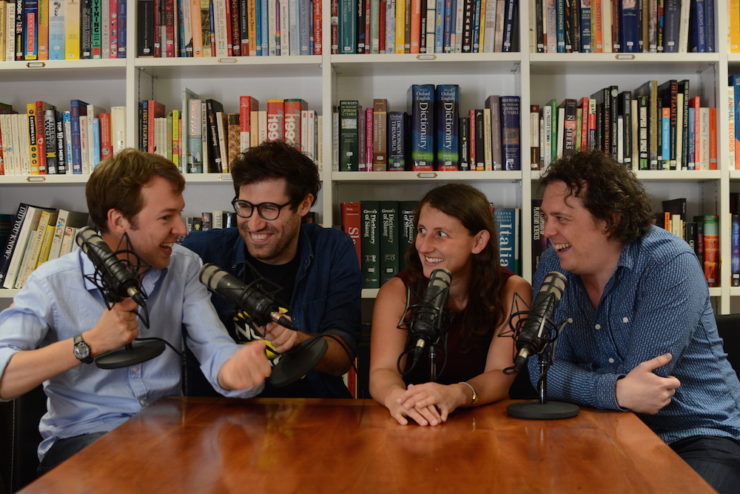
Getting Ready to go Live With Your Podcast
Once you’ve got your podcast’s purpose, your equipment, your niche, and niche figured out, it’s time to get your podcast out into the world!
But before you start recording and throwing it onto every podcast directory you can get your hands on, let’s make sure you take care of these details first. These preparatory steps are going to be what turns your podcast from something that people occasionally listen to, to an award-winning podcast that you can build a following around.
READ MORE: FREE TRAINING: Explode Your Instagram Account With Our IG Hacks Masterclass
Have at Least 5 Episodes
Before you start telling everyone about your podcast and start planning launches and events around it, make sure you have at least 5 episodes ready to go before you even publish your first one.
When we first started the Foundr Podcast we actually had up to 20 episodes in the bank before we even launched. We launched three on our first day, then did five per week, then four per week, then three per week, until eventually, we were releasing one episode per week. Meaning that at the end of an eight-week period we had released over 20 noteworthy episodes that immediately put us on the map.
By making sure we always have a few episodes in the can it means we’re never working under the wire and trying to produce a new episode every single week. Otherwise, it takes too much time, effort, and unnecessary stress to try to figure out what’s happening with the next episode every single week.
It’ll also help you figure out the longevity and frequency of your podcast. Making a handful at once will tell you whether or not this is a project you want to spend time on every week for some time, or if you’d prefer to go for a more seasonal format.
Podcast Title and Summary
When it comes to naming your podcast and writing the summary for it, it’s always better to be clear instead of clever. The reason is that you want new listeners to be able to understand what your podcast is all about at first glance before they even decide to download your first episode.
A great SEO hack that’ll help give you more exposure and make it more discoverable is to load your title and description with popular keywords in your niche. Not only will this help you out in terms of SEO, but you’re more likely to get your point across if you’re using keywords and terms that your audience can immediately recognize.
Just spending 15 minutes using the Keyword Planner can help you figure out what keywords your audience responds to the most.
Remember to think in terms of your ideal listener. What is it that they would want to see if they’re looking for a new podcast to listen to.
Cover art, Intros and Outros
These are what I like to call “handshake” details. Just like when you meet someone new, you can immediately understand a lot about them from their handshake. Putting in some effort into these details will make sure your podcast comes off more professional and less like a limp fish.
Remember that you only have half a second to get someone’s attention. Don’t make it too plain or too cluttered. Having your artwork be eye-catching and look professional and well-designed is what separates your podcast from all the others at first glance.

If you’re not a designer, I highly suggest checking out places like Fiverr, Speedlancer, or 99designs and commissioning someone to create your artwork for you.
A lot of podcasters have a short piece of music they play at the start and at the end of every podcast episode. Music is a great way to set the mood and tone of your podcast so make sure you pick the right track.
You can find copyright-free tracks you can use for your podcast at places like Free Music Archive or the Vimeo Music Store.
Submitting to iTunes, Spotify, and Stitcher
Once you’ve chosen your preferred hosting service from the list above, you can now submit your podcast to directories like iTunes, Spotify, and Stitcher. There are other podcast directories out there like Blubrry and Miro, but iTunes, Spotify, and Stitcher are by far the most popular.
Before you load up your podcast episode, make sure that you double-check your cover art, title, description, and metatag information associated with your .mp3 file. You can do this easily with Audacity if you’re using that as your audio-editing software, or you can use services like ID3 Editor.
After that, it’s just a matter of submitting your podcast to these directories and waiting for it to get approved!
A quick warning though, iTunes can take anywhere from 24 hours to two weeks before your podcast gets approved. So be very careful about any promotion plans you may have if you’re relying on your podcast to be out by a certain date.
Promoting your Podcast
So now that your podcast is live, it’s time to draw listeners to it. Just like anything else in the startup world, it’s never a “build it and they will come” scenario. No matter how amazing your podcast may be, no one is going to appreciate it if they don’t know it exists in the first place.
Here are some very simple ways you can promote your podcast and start getting people to pay attention to what you have to say.
Have a Strong Call to Action
According to a 2019 study by Edison, 54% of podcast consumers say that they are more likely to consider buying from brands they hear advertised on podcasts, compared to 7% who say they are less likely. That means podcast advertising has a far higher conversion rate than most content outlets.
If you’re a podcasting veteran, this means that you should start advertising right away. But if you’re just starting out, it means you should use your call-to-action to help you build exposure instead.
When it comes to ranking in the top of your category, the metric that podcast directories pay the most attention to doesn’t download, but positive reviews. Use that powerful call-to-action and ask your listeners to leave a review or to share your podcast with their friends.
In the initial stage of your podcast, you want to focus on building up as much exposure as possible.
Transcripts and Show Notes
If you have a website where people can access your podcast, I would highly recommend you offer transcripts or show notes for your episodes. Especially for SEO purposes, transcripts and show notes are little details you can get a lot of mileage out of.
The main reason to do this is that you want to make your podcast accessible to everyone, not just people who like to listen to podcasts.
By offering a transcript of your episode, you allow that type of audience member to still get value from your podcast without having to sit through an entire episode. It also gives your audience a much clearer idea of what they can expect from your episodes and whether or not they want to take the time to listen.
Unfortunately, having reliable software that can accurately transcribe audio is still a technology of the future. However, you can use services like Speechpad that have teams of expert transcriptionists that you do your show notes for you. Or you can hire a dedicated transcriptionist using platforms like Upwork if need be.
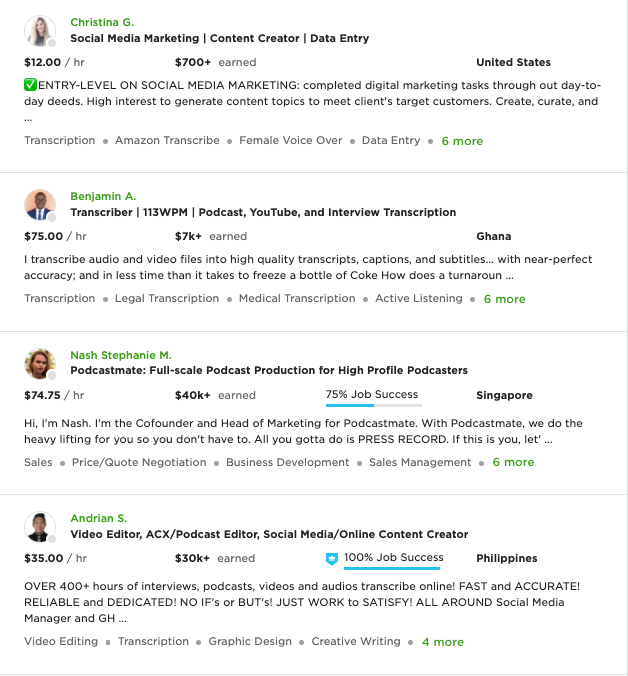
Guest Podcasting
Take advantage of your podcast network.
This is similar to how we do S4S, or share-for-share, on Instagram, instead of trying to convert cold leads into listeners. By being a guest on someone else’s show, you’re effectively putting your content out in front of an already engaged audience, and piggybacking on someone else’s influence and authority. It’s a great way to further expose and generate interest in your podcast, especially if you’re in a similar niche, to an audience that you know will be interested in your content.
In return for being on their podcast, you can invite them to be a guest on yours, or you can look for other points of leverage like helping them out with other content, or introducing them to guests you’ve had on your show.
Find Your Starving Crowd
Instead of trying to attract an audience to your podcast, get your podcast in front of your target audience. Find your starving crowd. Find out which online communities your ideal listener hangs out and become an active member, too.
A great place to start off would be /r/podcasts on Reddit, where you’ll find an incredibly supportive community of other podcasters who can help you out.
Search for communities related to your niche on social media sites like Facebook, Google Plus, and LinkedIn. But be careful about how you present to these communities. Avoid spamming them with the latest updates from your podcast, as that’s a one-way ticket to burning your audience.

Create Shareable Images
Something we do for every podcast episode is to create a shareable image. The image is a very simple picture of our guest of the week with a quote from them overlaid on top. Super simple.
This image is then shared around on all our social media platforms like Instagram, Twitter, Facebook, and LinkedIn along with a short caption.
Creating these images makes our podcast much more likely to be shared by our audience, and gets more people to listen to the episode. Remember that people are more likely to respond to images than straight text, so this is just a low-hanging fruit that anyone can grab.
Services like Canva are great for creating your own shareable images for your podcast (plus, it’s free to use!).
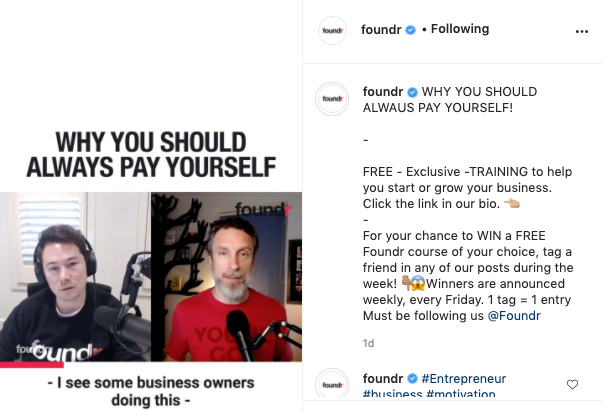
Followup Email
If you’re doing a podcast that features a guest, or one where you frequently mention a notable influencer, you should definitely send them a reminder or follow-up email once the episode goes live.
While this might seem like a no-brainer, you would be surprised at how many people don’t actually promote the podcast they were featured on. Getting your guest, especially if they’re a notable influencer, to mention your podcast is huge in helping you generate more exposure.
The key to getting your guest to promote your podcast is to make the process as easy as possible for them. Creating some sample copy for them in an email so all they have to do is copy and paste it into their own social media channels is a super-simple tactic that can help you out a lot.
Spin Content
If you can re-use or repurpose any part of your podcast episode, you should do so, immediately. Having your content on a variety of mediums can do amazing things to help you increase your podcast’s exposure and the potential for getting discovered.
A very simple way to do this is to upload your podcast onto YouTube, in case you have any listeners out there who prefer streaming over downloading.
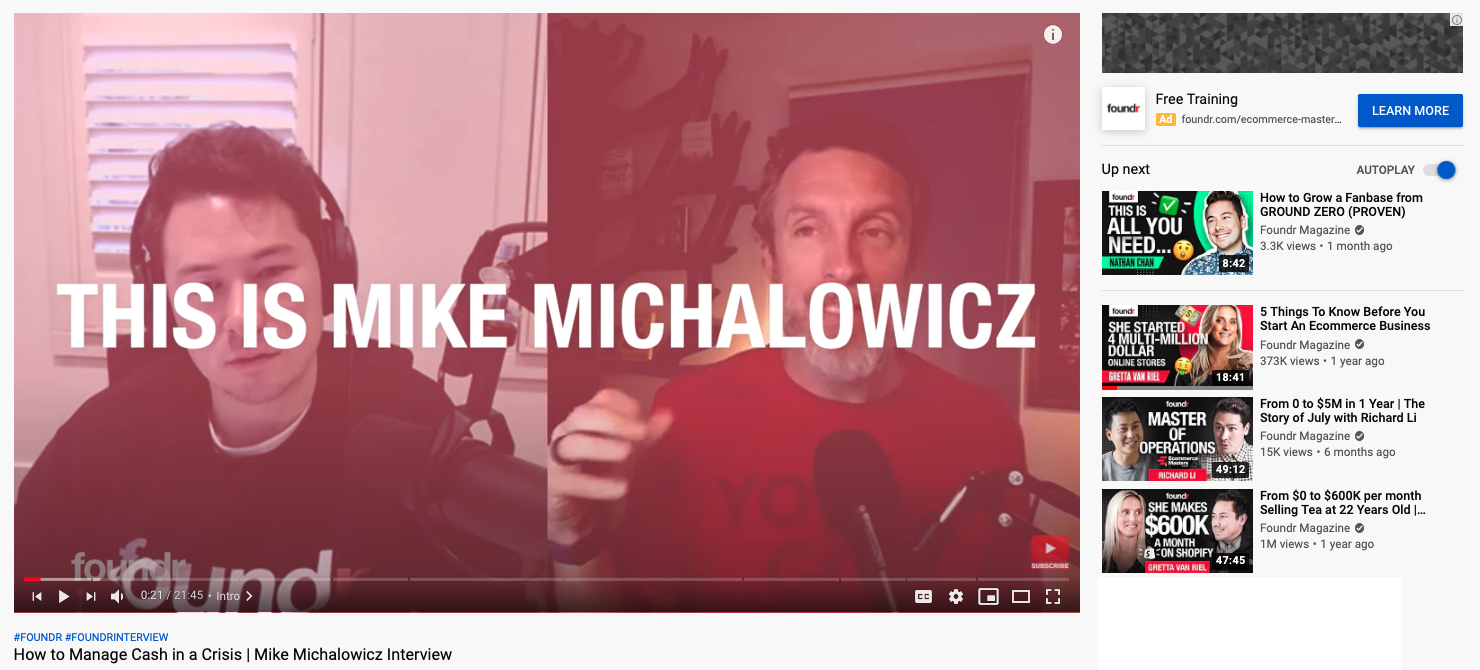
Another way is to simply write an article where you go over some of the topics you discussed in your podcast and add links back to the episode throughout the article.
By repurposing your content, not only are you improving your brand’s reach and influence but you’re also serving your audience members who aren’t podcast listeners. Everyone likes to consume content differently, so the best thing you can do is make your content available for everyone.
Starting a Podcast?
That should get you on your way to launching a killer podcast that will help you reach your business goals. And remember, a big reason to start podcasting is that it really is a lot of fun. The community, the conversations, the engagement with your audience, talking into a little microphone — there’s really nothing like it.
We live in amazing times when pretty much anyone with an internet connection can become the host of a radio show. So get out there and start recording!
The post How to Start a Podcast: A Definitive Checklist appeared first on Foundr.
Author: Nathan Chan
Source : https://foundr.com/starting-a-podcast
Date : 2020-09-07T05:04:00.000Z
